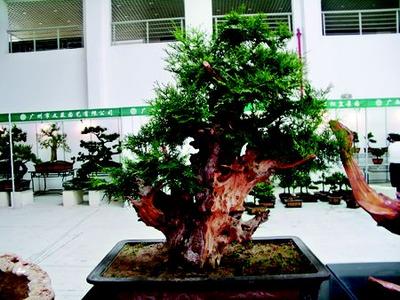| Home / Environment / Public Endeavor | Tools: Save | Print | E-mail | Most Read |
| Extinct Arborvitae Returns to Southern China |
| Adjust font size: |
During the Third China (Shenzhen) International Cultural Industries Fair held between May 18 and 21, carvings fashioned from the roots of arborvitae trees drew the admiration of the crowd for their exquisite beauty, with many labeling them "national treasures".
All these carvings have come from the skilled fingers of Chen Yihong, a Chinese folk carver and collector, who has built up several thousand pieces of root carvings over the last 20 years. His skill has paid off since one of the works at the fair was valued at 5 million yuan (US$653,300). Chen was first introduced to arborvitae a decade ago and since then has fueled his ardor by investing time and money into the study of these precious trees. His efforts have been rewarded, not only by having the largest collection arborvitae carvings in the country, but by discovering some rare living specimens. The arborvitae tree's scientific name is Thuja sutchuenensis Franch and apparently originated in the Cretaceous period. Experts have dubbed it the plant equivalent of the giant panda, a "living fossil" due to its rarity and age. Thuja sutchuenensis was first discovered by R. P. Farges, a French missionary in 1892, on the southeast flank of Daba Mountain in the modern-day Chongqing Municipality. This area appears to be the only natural environment for this rarest of plants but over the past century, the constant stream of visitors to the zone had pushed it to the brink of extinction. Chen revealed that scientists rediscovered Thuja sutchuenensis in the Daba Mountain Nature Reserve 1999. It was immediately placed on the World Conservation Union's red list of endangered species and Chen has sworn to protect it. Currently, Chen is planning to set up an arborvitae museum in his hometown of Jiangmen in Guangdong Province. Meanwhile, he will make a full-court-press on non-governmental organizations and local departments to obtain their cooperation in protecting the rare plant species. "I will place arborvitae carving treasures in the museum to help people learn more on the plant and how to protect it," he said. (China.org.cn by Li Jingrong, May 23, 2007) |
| Tools: Save | Print | E-mail | Most Read |
 |
| Related Stories |
|
|
